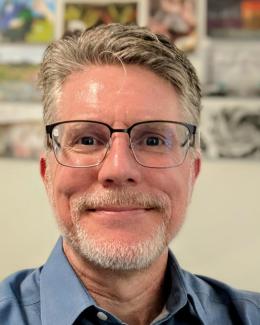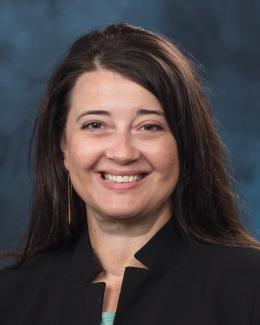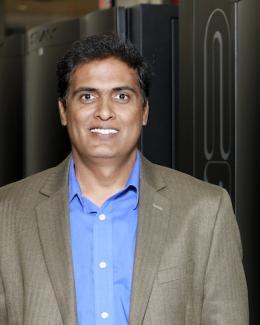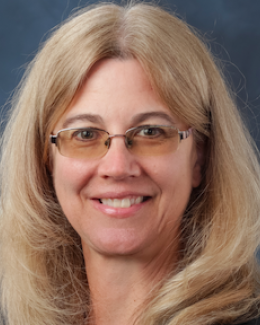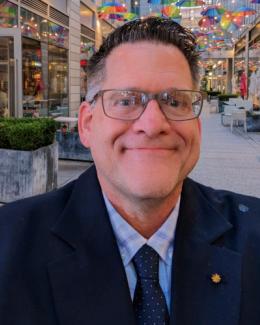With the startling increase in extreme events like wildfires, hurricanes and flooding over the last decade, large regions of the country and the globe are experiencing significant impacts from climate change. Rather than an abstract future possibility, climate change has become a tangible reality — fueling urgency to better understand and predict its effects and develop solutions to address its impact on economic and national security.
The stakes are high. According to the fourth National Climate Assessment — an evaluation written by 300 experts across 13 federal agencies, national laboratories, academia and the private sector — the costs to the United States economy of projected climate effects include $141 billion from heat-related deaths, $118 billion from sea level rise and $32 billion from infrastructure damage by the end of the century.
In the simplest terms, climate change is driven by increasing amounts of carbon dioxide, methane and other greenhouse gases in the atmosphere that trap the heat of the sun and contribute to rising global temperatures.
The reality is much more complex. Myriad interconnected natural and human processes are affecting the accumulation of carbon dioxide and other greenhouse gases. This presents a grand challenge for the scientific community to understand and predict the future of the planet under a range of scenarios and to generate technologies that effectively address environmental change.
As a leader in climate science, clean energy innovations and national security, ORNL is in a unique position to harness extensive expertise and big science tools like the nation’s most powerful supercomputer to provide solutions and inform decision-makers tackling this most formidable of challenges.
Advancing a predictive understanding
Understanding the future of our changing Earth begins with intensive investigation into current ecological systems and how they interact. ORNL has been at the forefront of ecology since the 1950s, when the lab began measuring radioactive isotopes in nearby streams. Today, that leadership extends to an array of large-scale experiments in ecosystems that are particularly vulnerable to climate change, from the peatlands of Minnesota to the tropics to the northern reaches of Alaska.
“Our scientists want to understand how the world around us works,” said Stan Wullschleger, associate laboratory director for biological and environmental systems science and director of the Climate Change Science Institute. “Fundamental science discoveries are the launch pad for increasingly complex and sophisticated Earth system models.”
Improving the predictive capabilities of Earth system models is what drives much of the research. ORNL contributes to a powerful global model known as E3SM, which stands for Energy Exascale Earth System Model. E3SM relies on advanced supercomputers such as the lab’s Summit system to model fine-scale interactions among land, oceans and atmosphere, including such factors as sea ice and sea levels.
Modeling the carbon cycle — a term that applies to the movement of carbon among the planet's atmosphere, oceans, plants and soils — is an immensely difficult job. Understanding the multitude of processes that influence carbon cycling and coding them into representative equations in Earth system models is often an iterative and collaborative endeavor between teams of scientists collecting data, extracting knowledge and translating that knowledge to the global scale.
Interactions with similar cycles for key nutrients such as nitrogen and phosphorus must be considered as well. Plants store carbon in their roots, stems and leaves, but their growth is often limited by a lack of nitrogen or phosphorus. These elements also affect the pace at which microbes break down organic matter in the soil, releasing stored carbon back into the atmosphere as carbon dioxide.
A team of researchers led by CCSI Deputy Director Peter Thornton, who heads ORNL’s Earth Systems Science Section, helped expand E3SM’s capabilities to allow coupled simulations of phosphorus, carbon and nitrogen cycles.
“By integrating more process details, we’re able to improve predictions of future feedbacks between ecosystems, human systems and climate systems,” Thornton said.
Boots on the ground
ORNL is a world leader in investigating these land-based processes at the intersection of biology, chemistry and geology and examining their effects on ecosystems. The lab leads two of DOE’s flagship projects — NGEE Arctic and SPRUCE — focused on examining the carbon balance in higher latitudes, where temperature is increasing twice as fast as at lower latitudes. These northern ecosystems harbor immense carbon stores in their soil.
Cold temperatures and often water-logged soils in these ecosystems have historically limited microbial activity, slowing decomposition and allowing deep layers of organic matter — and carbon — to build up. With conditions changing, scientists are closely observing shifts in ecosystem patterns through a variety of remote and in-person measurements. Examining data such as rainfall, shrub growth, permafrost thaw, snow depth and the types of microbes found in the soil provides insights into how ecosystem processes are responding to environmental change.
As part of Next-Generation Ecosystem Experiments Arctic, or NGEE Arctic, a diverse team of 150 hands-on scientists and modelers from ORNL, other national labs and universities work together to represent observational data and critical processes in Earth system models.
One such collaboration recently added depth to the representation of plants in Earth system models based on data collected at NGEE Arctic field sites. ORNL ecologist Verity Salmon, ORNL Earth system modeler Ben Sulman (profile, p. 49) and colleagues analyzed the plant data from various watersheds in Alaska and determined which plants should be added to the model as plant functional types — distinct categories of plants with their own parameters and functions to perform in carbon-cycle modeling.
The research team integrated a representation of lichens, moss and shrubs of different heights into the model and calibrated them to more accurately reflect data on root growth and other key features of Arctic plant life.
“That plant diversity is really functional in this ecosystem,” Salmon said. “It was exciting to see that structure can be recreated in the model.”
With almost 400,000 types of vascular plants worldwide —those with conductive tissues to move water and nutrients — it is important to get the right representations of crucial plant types in the right locations in Earth system models. There are too many plant varieties to represent them all, so identifying the critical aspects to incorporate is vital.
“It takes a lot of boots-on-the-ground knowledge to decide which factors to represent and to be able to do that appropriately,” said Plant-Soil Interactions Group Leader Colleen Iversen, who contributed to the recent study.
Exploring possible futures
What happens when there are important dynamics that cannot be measured because they do not yet exist? ORNL responds by conducting a unique, whole-ecosystem warming experiment that allows scientists to explore a range of possible futures.
Spruce and Peatland Responses Under Changing Environments, or SPRUCE, uses a series of enclosures to expose large peatland plots in the forests of Minnesota to five different temperatures. The hottest of the chambers experiences an increase of about 16 degrees Fahrenheit above and deep below ground. Half the enclosures also receive elevated levels of carbon dioxide.
“Because of DOE’s investment in a large-scale experiment, we’ve been able to study whole ecosystem warming across a range of temperatures that can’t be extrapolated from historical data,” said Paul Hanson, ORNL Corporate Fellow and SPRUCE project coordinator. “In doing so, we have evidence that carbon losses will be anticipated for rapidly changing peatland systems in the future.”
Peatlands currently cover around 3 percent of Earth’s landmass and hold at least a third of global soil carbon, more carbon than is stored in the world’s forests. Peat bogs such as the SPRUCE site are particularly good at locking away carbon because of the cold, wet, acidic conditions that preserve meters-deep layers of ancient plant matter.
ORNL scientists examined three years of SPRUCE data, tracking changes in plant growth, water and peat levels, microbial activity, fine root growth and other factors that control the movement of carbon into and out of the ecosystem. Together, these intakes and outputs make up what’s known as the carbon budget.
The study found that in just three years, all warmed bog plots turned from carbon accumulators into carbon emitters. This fundamental shift in the nature of the bog occurred even at the most modest level of warming (about 4 degrees Fahrenheit above ambient temperature) and showed carbon loss rates five to nearly 20 times faster than historical rates of accumulation.
Fueling science with data
The SPRUCE and NGEE Arctic projects are slated to continue well into the future, promising to yield additional insights about these changing ecosystems. Volumes of experimental data from the projects are available for use by the broader scientific community, as is the E3SM model. ORNL has long served as a repository and resource for climate-change data, storing measurements from around the world and providing the data in climate model–friendly formats.
Ecosystem and carbon cycle data from ground-, aircraft- and satellite-based campaigns are available through the ORNL Distributed Active Archive Center, which stores and distributes data from NASA Earth Science missions focused on terrestrial systems.
Millions of atmospheric measurements of sunlight, cloud characteristics, particles in the air and other phenomena influencing global climate are shared via the ORNL-managed data center for the DOE Atmospheric Radiation Measurement (ARM) User Facility. Sensors from the Americas to the Azores capture these data, with some measurements taken every 10 seconds.
The ARM Data Center hosts 11,000 data products encompassing thousands of terabytes of data, including measurements from the American Midwest and the Amazon, from ships traveling the Southern Ocean between Tasmania and Antarctica and, most recently, from instruments ensconced on an ice floe for a year at the North Pole.
“These data are an invaluable resource for scientists to improve predictions of global environmental changes,” said ORNL’s Giri Prakash, director of the ARM Data Center.
More knowledge, better predictions
These data inform and help to validate projections from Earth system models, which are often primed by focusing on the last 150 years through the present. Comparing outputs from the model to the actual data for those time periods aids scientists in calibrating the models to better predict future global change.
“We want models in which we can have the most assurance,” said Forrest Hoffman, group leader for Computational Earth Sciences. “We always run over the historical period, and that gives us a lens through which to look at future projections.”
Many climate models are in use, and each has its own strengths and sensitivities. Hoffman leads an international benchmarking project focused on comparing models to quantify aspects where one model does better than another. The project aims to reduce uncertainty and variation in the model results. “Using a wealth of truthful data,” Hoffman says, “we are in pursuit of the Truth with a capital T.”
Models have improved significantly over the last two decades as new measurement and storage capabilities have yielded increasing amounts of data along with the computing power to analyze and incorporate them. Wullschleger describes this trajectory as moving from the black box models of the past, where the workings of the equations within the models were not transparent, to new models with much richer processes represented.
“When we need to make a decision, or implement some sort of a management strategy, or try to understand, for example, whether planting trillions of trees would make a difference to the global carbon cycle, we can answer that question,” Wullschleger said. “Twenty years ago, we didn’t have the sophistication in the Earth system models to address that question, but we do now.”
Global to local decision-making
Outputs from Earth system models can also feed into smaller-scale models designed to examine climate impacts on the national, regional or local levels, providing useful information for decision-makers.
For example, computational scientist Melissa Allen-Dumas and colleagues used outputs from E3SM to set initial and constraining conditions in a weather model that supplied finer detail about the Chicago area. They equipped the weather model with data on the city’s urban topography, including building sizes, locations and heights. Using this integrated process, they looked at several scenarios for developing a vacant piece of land adjacent to the southwest section of the Chicago Loop. Their results showed which building geometries would have the greatest cooling effects on the temperatures and resulting energy use in that future neighborhood and for the entire Loop.
She sees intriguing opportunities for results from these simulations to feed in the other direction as well to inform E3SM and other global models. Machine learning and artificial intelligence approaches could be key to facilitating closer integration.
“By putting all of these models together in a loose two-way coupling, we can begin to look at the impacts of how decisions made about individual neighborhoods work their way up to affect global climate,” Allen-Dumas said.
Exploiting AI for clean energy, carbon capture
Understanding how dynamics change when new decarbonization technologies are factored into the global carbon cycle is tremendously challenging.
ORNL is a leader in clean energy research and development, generating a significant and growing portfolio of early-stage technologies for transportation, buildings, manufacturing and other sectors. From quantifying the carbon-sequestering potential of bioenergy crops to creating new battery technologies for electric vehicles to engineering carbon capture devices that reduce power plant emissions, researchers across the laboratory are focused on translating fundamental science discoveries into technological breakthroughs to increase energy, economic and national security.
Examining the effects of these innovations on the carbon cycle requires estimating how much and how fast carbon worldwide would need to be taken up to meet a goal such as a specific global temperature. It also means understanding how the effects of technologies, such as chemical processes that directly remove carbon dioxide from the air, would scale over a large geographic area.
The net effect of removing carbon from the atmosphere will not simply be one number subtracted from another. The interaction will be far more complex, with the land and ocean likely releasing carbon into the atmosphere to bring the three systems into balance. This would be a reverse of the process seen in recent years, as the ocean and land have been absorbing much of the excess carbon dioxide from the atmosphere.
This is an area of modeling that ORNL’s Thornton and colleagues are just beginning to explore. It pushes the boundaries of predictive understanding. The lab will pave new ground by combining economic and technological factors into Earth systems models — factors such as resource availability and global markets for products that can be made from captured carbon.
“It's been really encouraging to see how much recognition there is across all of these disciplines that everybody has an important role to move this forward as fast as we can,” Thornton said.
The model will need to be repeated for each new technology developed. Thornton and his team will build on ORNL’s expertise in artificial intelligence to accelerate the research. Using machine learning strategies, the group will identify the parameters that are most important to improve the certainty of model projections.
“What drives us is new insights that, frankly, would not be available to us if we were just doing our small thing by ourselves,” said Eric Pierce, division director for Environmental Sciences. “There is a richness in the discoveries at the intersection of these many disciplines that continues to move us forward as individuals and as a broader science community.”
“Our research in the field, laboratory, and collaboration with computational scientists provides a wealth of foundational data and insightful projections to not only inform decision-making, but to measure outcomes and progress as we move toward a clean, resilient economic future,” Wullschleger said.









